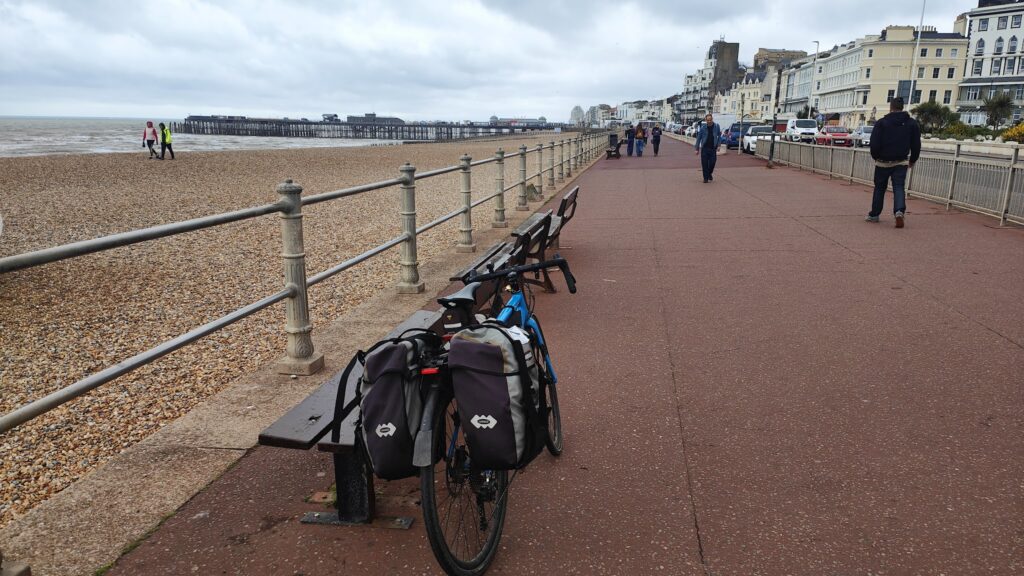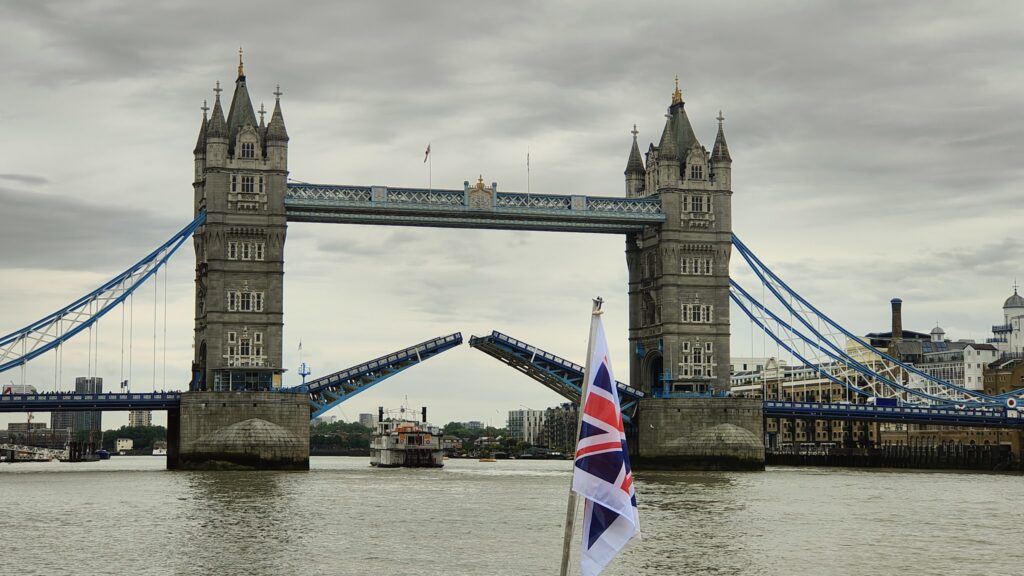
On Tuesday, in a short break from cycling, Jenni and I went to the RHS flower show at Hampton Court Palace. It was a fabulous location for such a quintessentially British occasion and we had a lovely time, right down to taking afternoon tea among the rose displays. So far it is working quite well to include a joint experience for a day somewhere en route to a Cardinal point. This particular example – a long-ish train journey from home and an overnight stay in the bustling capital – represented another significant step in her recovery from serious injury. There should be many more experiences to come.
On Wednesday, however, it was very much back to cycling for me. I had an appointment with the seaside at Hastings and a battle to reach it. Ahead of me lay the sprawling southern suburbs of Greater London and then the relentless hills of the High Weald: not the very longest of days; but certainly one that required its fair share of effort.
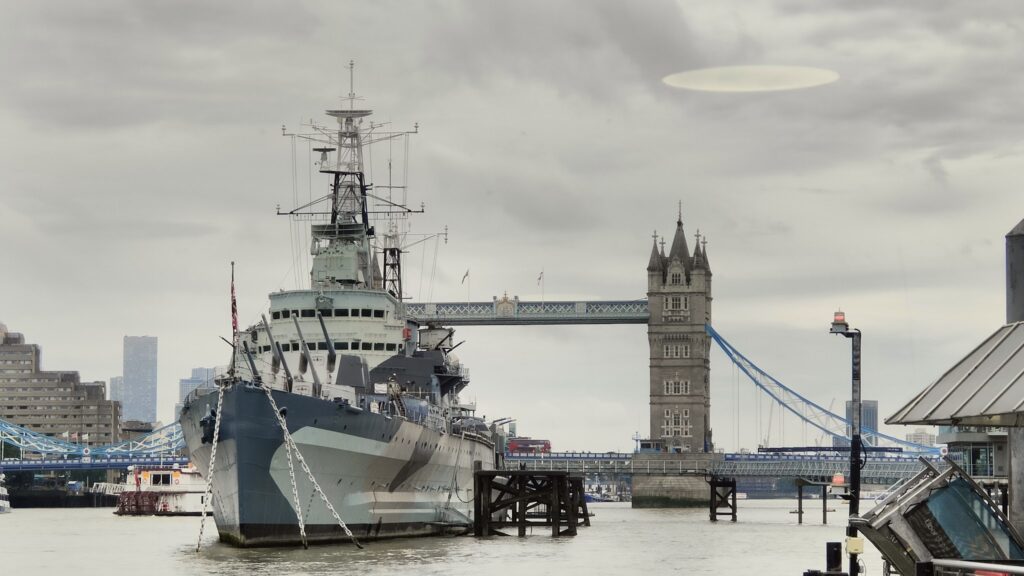
I began today much as I had finished Monday, by taking my bike on the Thames Clipper fast passenger boat all the way from Battersea Power Station downstream to Greenwich, across the river from the skyscrapers of Canary Wharf, where I had reached cycling SE down the Lea Valley. Again it was a brilliant experience and a superb way to see the famous sights of the capital, despite the cloudy weather. I doubt there is a better – or cheaper – way to do this. The voyage took just over an hour and we even had the thrill of seeing Tower Bridge open in front of us for a larger boat. I enjoyed tea and a second breakfast on board the clipper and arrived at the start of my day’s cycling in the most buoyant of spirits.

I disembarked right in front of the Cutty Sark – a proper tea clipper – right by the grand buildings of the Royal Naval College. It was a fitting start to my ride, which almost immediately took me uphill along the side of Greenwich Park. For the next two hours, I navigated the best and quietest path I could find through the Kentish parts of London. First came pretty Blackheath, where I crossed the open heath with its tall church spire up on the hill top, one of London’s many green spaces, and then I followed a mostly straight line out to Chislehurst, which seemed very desirable and equally impressively churched. This sense of affluence was a common theme throughout most of my route today. Orpington, a large and typically red-brick London suburban town a little further out, had an impressively long and vibrant high street. I made good use of some long, straight residential streets and found myself among some truly enormous residential properties in places like Chelsfield (where I briefly dodged a shower in the pinkest of cafés) and Pratt’s Bottom, which is much nicer than it sounds.
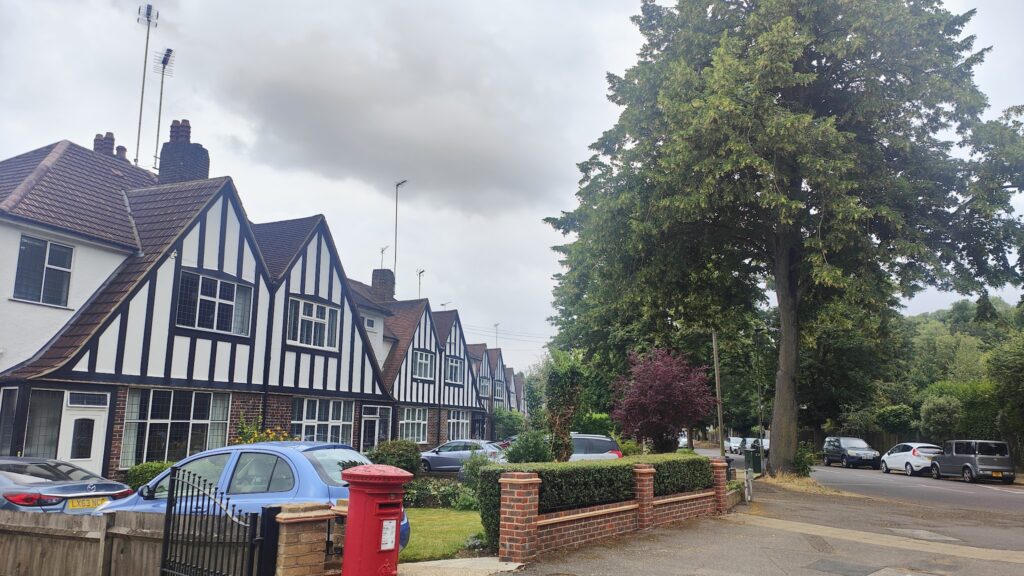
Then the hills really began. I crossed the M25 at last and headed up and down many a hill that always went on for longer than seemed feasible in these leafy environs. I earned every mile today and saw just why as I emerged from trees after Knockholt to a southern vista that dropped dramatically away before it rose up again in the distance. This is the High Weald Area of Outstanding Natural Beauty. It is indeed a beautiful part of the country and its towns and villages are also very attractive. I skirted the posh fringes of Sevenoaks and then made a bee-line for the centre of Tonbridge, which was followed a few miles later by Royal Tunbridge Wells. It must be confusing having two quite separate towns so close together with such similar names. Royal patronage aside, I learned that they are kept apart not only by a vowel disagreement and some wells; but also a very long, steep hill that the only road goes busily right over. I was raced all the way up it by a man on a folding Brompton bicycle and he won – just – although I think he’d only been as far as the shops and he pulled into a driveway at the top.
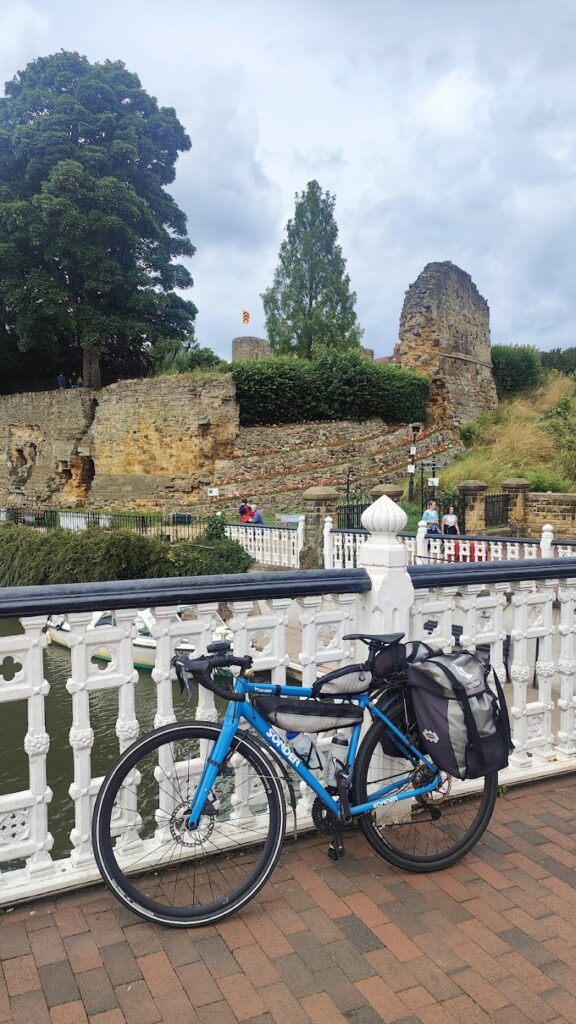
Tonbridge has a large private school in the middle which looked the sort of esteemed place where the privileged have made their way in the world for many decades. The high street seemed to be doing pretty well and there were pretty castle ruins that I viewed from the banks of the river. It was all very pleasant.
The Royal version over the hill was a much larger town with a confusing one way system. I knew there should be some impressive Georgian buildings to see, but it took a few minutes to locate the top attraction, which goes today by the name of The Pantiles. This is an elegant area of independent shops, cafes and restaurants in stylish Georgian surroundings. It was formerly known as “The Walks” and “The Parade” and linked the town to the chalybeate spring that led to its popularity as a “Georgian medicinal Mecca” (not my words). Anyway, it was a good place for a quick pint of “Meantime”, a quaffable Greenwich IPA, and a fancy cheese sandwich to see me through the final three hours of hilly cycling.
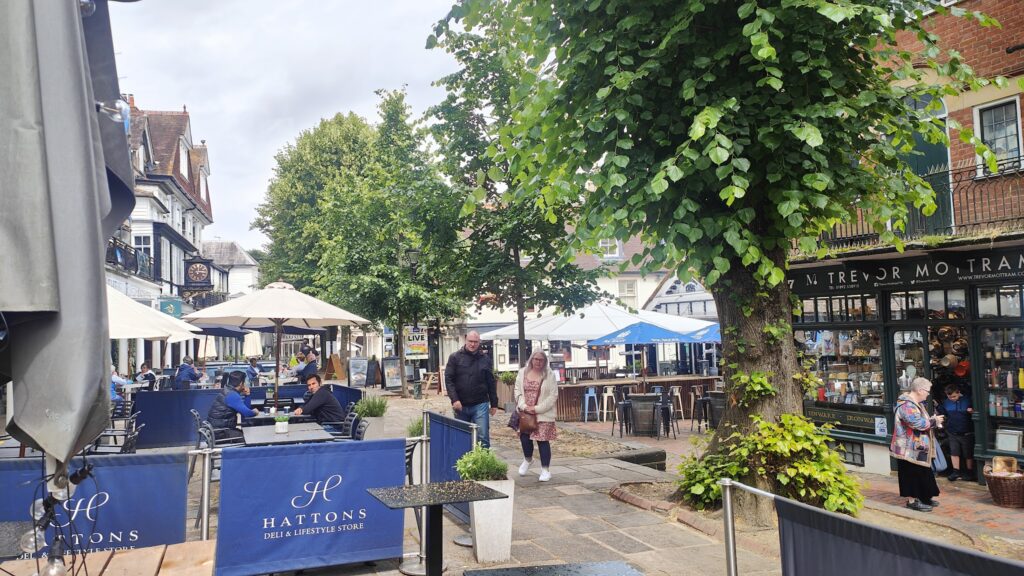
The hills never relented and Hastings felt like a place so near and yet still so far away. I passed through a few more lovely places en route. Wadhurst, especially, felt like the kind of place you would be happy to live: a large village or small town (who knows which) with a range of independent shops and a timeless feel. You could do very much worse.
In the village of Brightling, I noticed an unusual large stone pyramid in the churchyard. This is the mausoleum of John “Mad Jack” Fuller (1757 – 1834), MP for Sussex, eccentric and folly builder. He preferred to be known as “Honest John” and he sat in the Commons for 32 years. He was both a philanthropist and a slave owner.
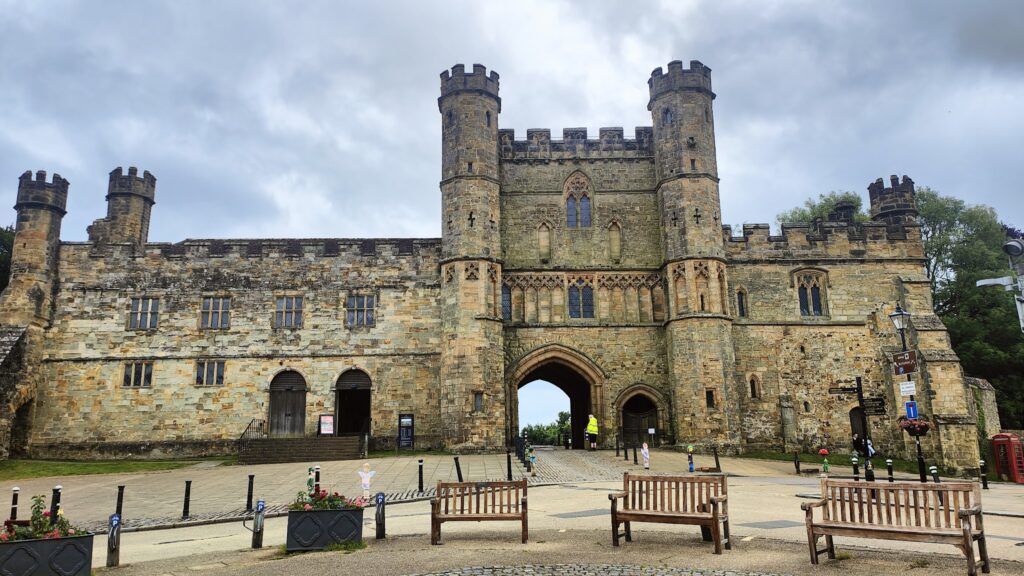
The final highlight of my ride was the small town of Battle, a few miles short of the long descent to the coast and Hastings itself. This is another quaint old place, full of history, but also full of traffic and tourists. Its centre is dominated by the enormous fortified gatehouse of Battle Abbey. I only knew Battle from the gazetteer of my childhood map atlas of Britain as the place that came before my home town of Bawtry. But it was actually here (not Hastings) where the pivotal battle took place in the last successful invasion of England in 1066; an event that changed, well, pretty much everything.
I feel like I need to return here and set foot on the turf where it all happened. One day I will. I have neglected this part of the country but it has much to offer.
And then all that remained was the main road into Hastings. These south coast town are always bigger than I expect and it seemed to take ages to actually reach the sea front. It wasn’t especially pretty on the way in. The promenade was blustery and the views out to sea were expansive. I took my photos and made a dash for the station. I had an appointment with my cousin back in London and this is not a fast line. On the journey back we stopped in all the same places I had cycled through today. It was uncannily as if I had been cycling along a straight line.
